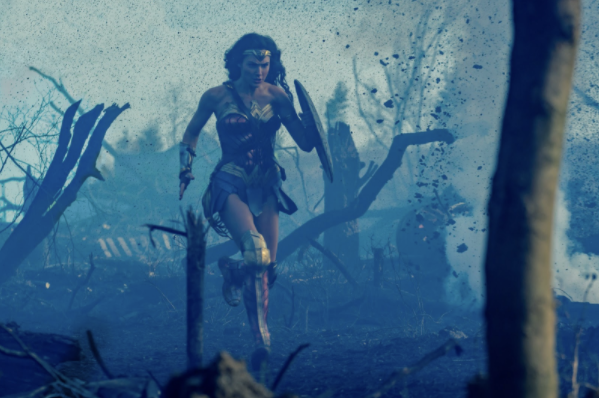Halle Berry’s “Catwoman” took center stage in my childhood. Meanwhile, my mom deliberately steered me away from Disney princess DVDs, dresses and dolls. She rejected the idea of a woman needing a prince to swoop in and whisk her away from an abusive home life to live “happily ever after.” Female Superheroes in movies like “Catwoman” and this summer’s hit “Wonder Woman” put the woman in charge of not only her fate, but the fate of the rest of the world, which more accurately mirrors reality.
Society sometimes places a higher value on women looking beautiful than on women feeling okay physically and mentally, and voicing their opinions. While 2004’s “Catwoman” — a timid graphic designer resurrected by an army of cats after being flushed from her company’s chemical pipes — does what she wants with her powers and must ultimately save womankind from an unscrupulous company, she’s also subjected to hypersexualization.
This paradox presents a common theme in women superhero stories: You have to be hot to be powerful. But lately, women superheroes have been portrayed in a more positive light. With shows like “Jessica Jones” and “Supergirl,” and movies like this summer’s “Wonder Woman,” multi-dimensional female superheroes give us a new narrative in which they can save the world in jeans and skirts. And, regardless of costume, these superheroes represent a female power fantasy, rather than a male-written sexual fantasy. They are written to empower women — not to satisfy men.
Dangerous objectification
Caroline Heldman of Everyday Feminism defines sexual objectification as the “process of representing or treating a person like a sex object, one that serves another sexual pleasure.” Objectification puts a woman’s worth in her sexual attraction while glossing over personality and ability, and it happens daily, as women face catcalling, sexual assault, victim blaming, and other crimes.
In a media still mainly built around the image and needs of the male, comic books are no exception. In 2011, Bowling Green State University associate professor Jeffrey Brown wrote that “modern female characters are so thoroughly eroticized that it is nearly impossible to find a superheroine or villainess that is not defined primarily by her sex appeal.” In a study of graphic novels, graduate student Jessica H. Zellers wrote: “only 6% of all males were suggestively clad, partially clad, or naked; while of all the females, 38% were suggestively clad, partially clad, or naked.”
I corresponded via email with comic book researcher Tim Hanley about women in comic books and asked, “What about men? Aren’t they hypersexualized, too, with such unreal muscles?” He did not think so.
“These muscular male heroes were a power fantasy, a projection of male strength, while the curvaceous female characters were a sexual fantasy, a projection of male desire. And those are two very different things.”
Hanley’s study found that male creators outnumber female creators 9 to 1, and 79 percent of those working on comic books in 2014 were white. Yet according to a Facebook study by graphicpolicy.com, women currently account for about 47 percent of comic book consumers (almost half!) and about 31 percent of both DC and Marvel characters.
Justice Rises
When envisioning the ideal female superheroes, we should look for heroines who embodies the female power fantasy. “When it comes to superheroes the female power fantasy seems to be rooted more in skill,” Tim Hanley wrote in an email. “When women write female superheroes, the focus is often on their unique abilities and what they bring to the table apart from just punching things. There’s punching, for sure; it’s a comic book, after all! But it’s not just brute strength. It’s strategy and intellect and a whole host of other abilities that don’t necessarily involve big muscles.”
Nyah Peebles, 16, attends North Springs Charter High School and worked on a team at VOX Media Cafe to put together a multimedia package about the new “Wonder Woman” movie. They wrote: “In a way, [female superheroes] are hypersexualized, but at the same time, they own their sexuality. I don’t think they’re hypersexualized by men. Even if they look good, they fight good, too.”
I’m not celebrating yet. I still believe we have a ways to go with the portrayal of women superheroes. Women superheroes should be written with depth that transcends their appearance, because women have depth that transcends appearance. In a better world, we can celebrate women superheroes — and women — first and foremost for that depth.
Maya, 17, attends Agnes Scott College.
“Wonder Woman” photo courtesy of Warner Bros. Pictures





Exactly the opposite needs to happen. If women are buying the comic books with hypersexual women and are okay with it then we need to do the same in movies to cater to the fanbase. It will sell just like the comics.